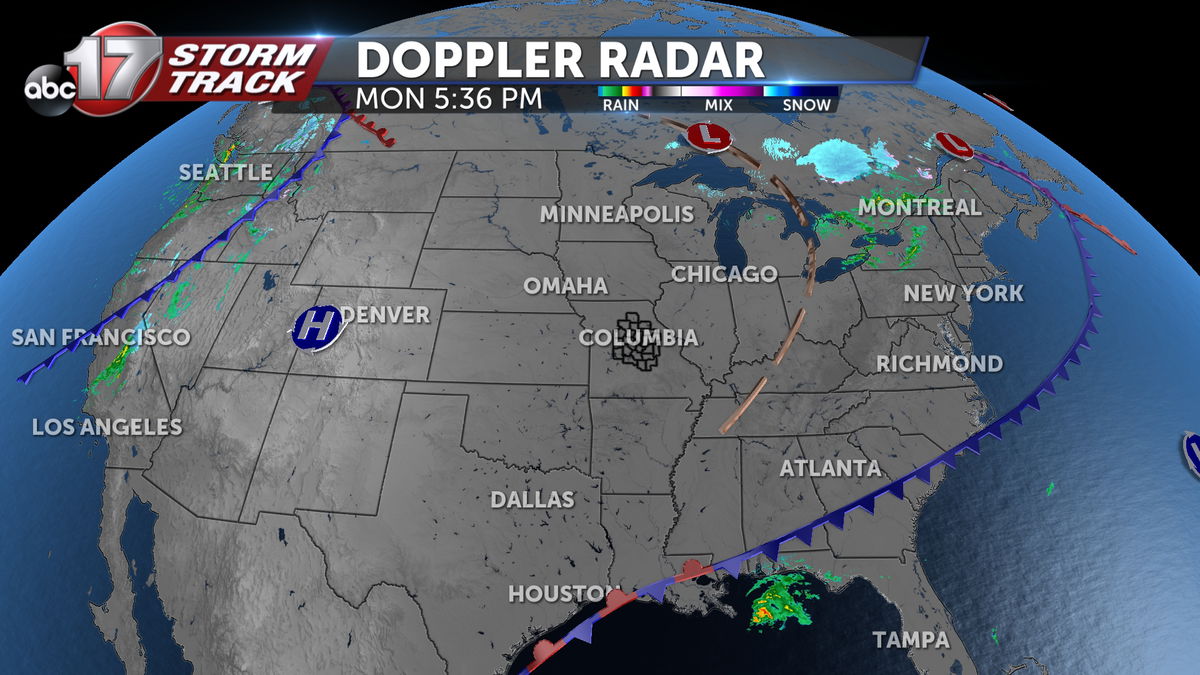The differences between high and low pressure systems and their impacts
Many people have heard their local meteorologist discuss high and low pressure systems on graphics such as the ABC 17 Stormtrack Doppler Radar or the Futuretrack, but what do they actual do and what are their real world impacts?

On the ABC 17 Stormtrack Doppler Radar shown above, a high pressure system sits alone towards Western Colorado. This high pressure system represented by a blue H shows no other atmospheric features in the nearby area. Low pressure systems are represented by a red circle and have fronts extending from them with a majority of the time seeing moisture tied nearby.

A high pressure system is typically a signal of drier conditions thanks to its air pushing away from it in a clockwise motion outward. This is otherwise called a high pressure dome acting as a guard from moisture that can influence showers, storms, and winter precipitation. This can also lead to consistent weather conditions for extended periods of time.

Low pressure systems act as a magnet for moisture as the air inside the center is rising causing a deficit of air at the surface. This void acts like a vacuum sucking moisture from surrounding areas and air from high pressure systems which can lead to increased wind speeds not tied to storms.
Low pressure systems can form different air masses that lead to fronts which can interact with moisture to drive changing weather conditions usually with increased odds of moisture.
The atmosphere is constantly trying to reach an equilibrium but due to the uneven heat of the surface of the atmosphere from the equator to the poles, there is never a balanced achieved. Mixing this imbalance with the Coriolis Effect, high and low pressure systems are constantly created and moving across the globe.
